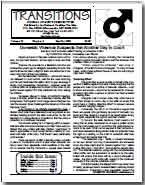Attorney-General Robert McClelland and Minister for Justice Brendan O’Connor today released a new Australian Institute of Criminology (AIC) report Children’s exposure to domestic violence in Australia.
In this paper, current knowledge about the extent of children’s exposure to domestic violence in Australia is described, along with the documented impacts that this exposure can have on children.
However, a leading men’s health organisation, Men’s Health Australia, says the report completely ignores the largest ever Australian survey of young people and domestic violence.
Published in 2001 by the National Crime Prevention division of the Commonwealth Attorney General’s Department and the Department of Education, Training and Youth Affairs, the national research involved a survey of 5000 young Australians aged between 12 and 20, and in-depth discussions with special groups, namely homeless youth, victims of domestic violence, and youth from different ethnic backgrounds.
This was the largest sample of young people ever surveyed on their experiences of parental domestic violence in Australia or, most likely, the world.
The main findings relate to young people’s understanding of and attitudes to domestic violence, their experiences of witnessing parental or carer’s domestic violence and of violence in their dating relationships, and how they deal with these experiences.
Key findings of this national research ignored by the new AIC report, include:
· Considering physical violence only, nearly a third (31.2%) of young people had witnessed one of the following: a male carer being violent towards his female partner; a female carer being violent to her male partner; or both carers being violent.
· 14.4% of young people reported that this violence was perpetrated both by the male against the female and the female against the male. 9.0% reported that violence was perpetrated against their mother by her male partner but that she was not violent towards him. 7.8% reported that violence was perpetrated against their father by his female partner but that he was not violent towards her.
· Most reported parental violence seemed to be minor, in that no effects were reported by the majority of child witnesses. Where outcomes were reported, the most likely outcome was the separation of the parents. The most severe disruptions on all indicators occurred in those households where both male to female and female to male violence was reported (ie two-way couple violence).
· Witnessing parental domestic violence had a significant effect on young people’s attitudes and experiences. Witnessing was also the strongest predictor of subsequent perpetration by young people. The best predictor of perpetration was witnessing certain types of female to male violence, whilst the best predictor of victimisation in personal relationships was having witnessed male to female violence.
· Where young people had, or were experiencing parental domestic violence, a third of them had not told anyone about it. This rate was higher amongst boys than girls and higher amongst the 12 and 13 year olds than the mid or older teens.
· Young people were more likely to say a woman is right to, or has good reason to, respond to a situation by hitting, than a man in the same situation. And while males hitting females was seen, by virtually all young people surveyed, to be unacceptable, it appeared to be quite acceptable for a girl to hit a boy.
Men’s Health Australia spokesperson Greg Andresen, said, “It is regrettable that these important findings were omitted from the new AIC report. If the government is serious about protecting children and young people from the effects of domestic violence, the National Plan to Reduce Violence Against Women and Their Children must be expanded to include male victims and their children.”
Media contact: Greg Andresen | media@menshealthaustralia.net | 0403 813 925


